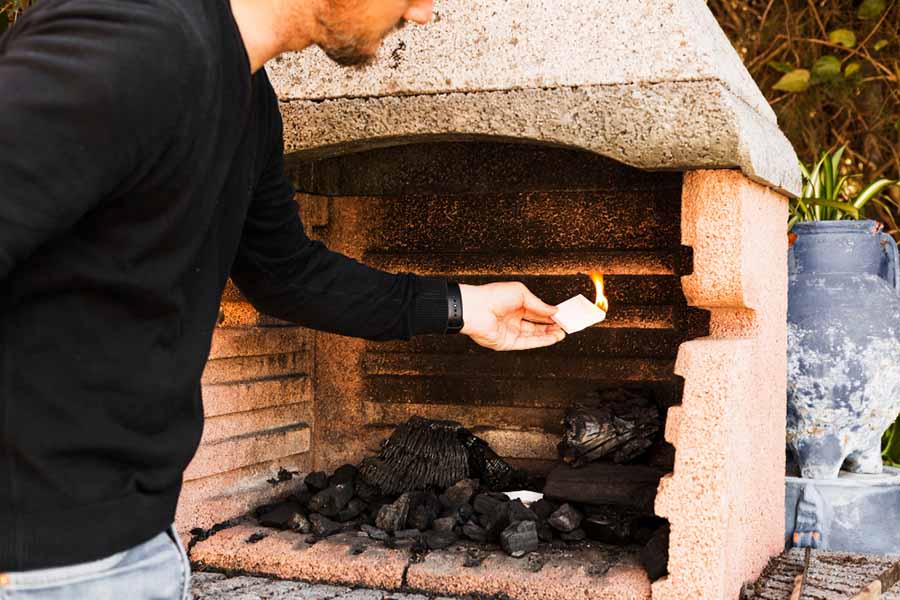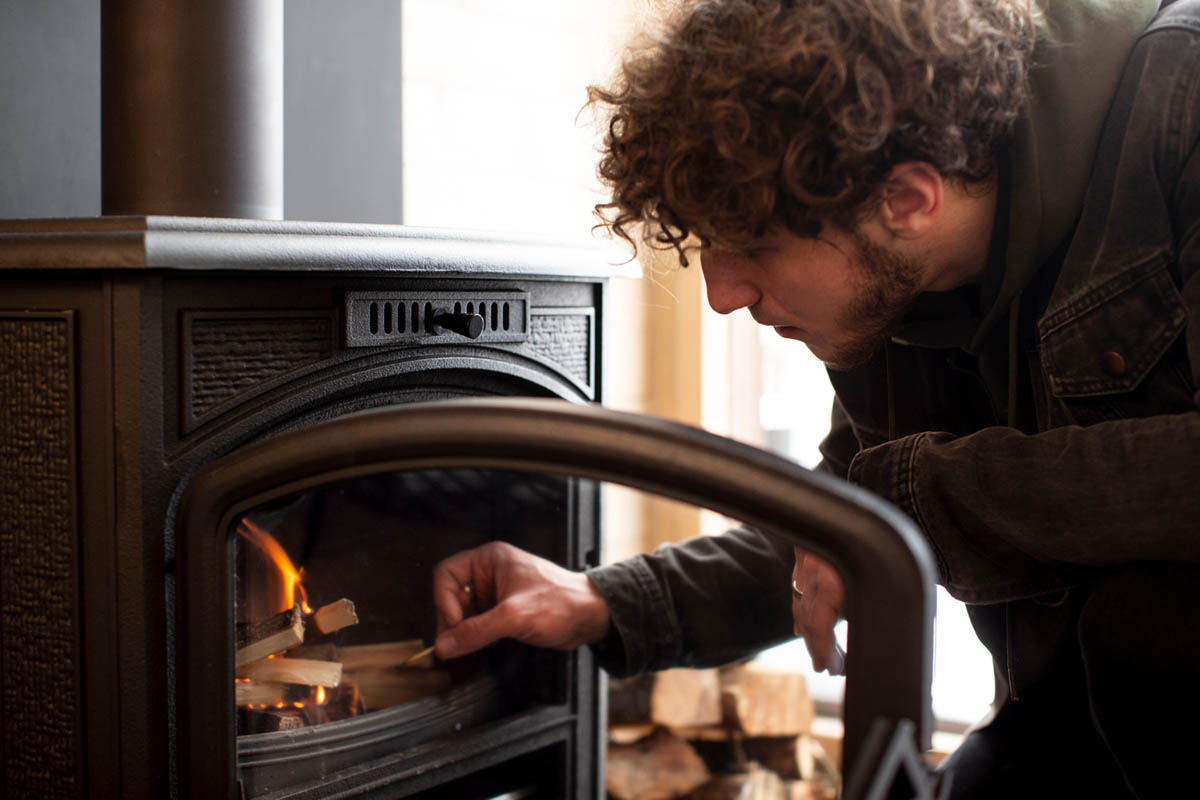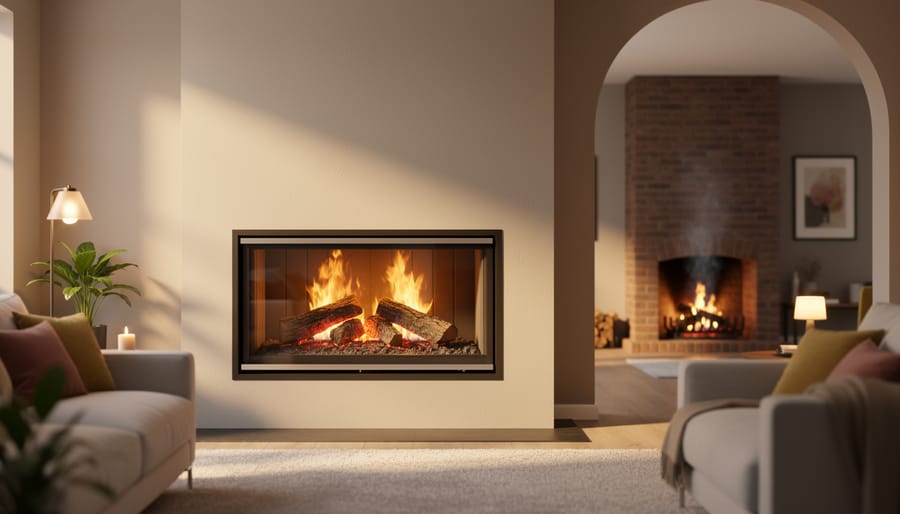A crackling fireplace adds warmth, ambiance, and comfort to any home. But before you cozy up and enjoy a delightful fire, it’s essential to understand how to open the damper fireplace flue properly.
The flue and damper play a crucial role in the safe and efficient operation of your fireplace, allowing smoke to escape and fresh air to circulate.
In this comprehensive guide, we will walk you through the process of opening the fireplace flue, understanding different damper types, and ensuring a hassle-free experience each time you light up your hearth.
The Importance of Opening the Flue

The fireplace flue is the passageway within the chimney that allows smoke and gases to escape from the fireplace and out of your home. When you light a fire, smoke and gases are produced, and they need a clear path to exit.
Opening the flue ensures that smoke is directed upwards and out through the chimney, rather than filling your living space.
Additionally, the chimney flue’s open position allows carbon monoxide, a dangerous byproduct of combustion, to exit your home safely, reducing the risk of carbon monoxide poisoning.
Enhancing Fireplace Efficiency
Apart from safety considerations, opening the flue also enhances the efficiency of your fireplace. The free flow of air through the flue facilitates proper combustion, enabling the fire to burn more efficiently.
An open flue also prevents smoke from lingering in the fireplace, minimizing soot buildup and ensuring optimal performance and efficient to start a fire during each use.
Is My Fireplace Damper Open or Closed?
Before you begin, you must determine whether your fireplace damper is open or closed. To determine if your fireplace damper is open or the damper is closed, you can perform a simple visual check. Look up into the fireplace flue using a flashlight.
If you can see an unobstructed passageway or daylight, the damper is likely open. This allows smoke to escape the room and ensures proper ventilation during a fire.
Conversely, feel for a draft and, if you see a metal flap blocking the opening, the damper is closed. Closing the damper when the fireplace is not in use prevents drafts and heat loss.
By performing this quick visual inspection of an open damper, you can ensure the damper is in the correct position before starting a fire in your fireplace.
What Type of Damper Do You Have?

Fireplaces can have different types of dampers, and each operates slightly differently. To proceed with opening the flue on wood burning fireplace, you need to identify the type of damper installed in your fireplace. Here are the common types:
Traditional Throat Damper
The traditional throat damper is located just above the firebox, at the bottom of the flue. It is controlled by a handle, rod, chain or lever inside the fireplace.
Top-Mounted Damper
As the name suggests, this damper is installed at the top of the chimney, sealing off the flue when not in use. Top-mounted dampers are highly effective in preventing drafts and keeping out animals and debris.
Throat-and-Top Damper Combo
Some fireplaces have both the throat dampers and top-mounted dampers, offering additional insulation and energy efficiency. If your fireplace has this combination, make sure to open both throat dampers before lighting a fire.
The Difference Between Flue and Damper

Flue and damper are two terms often used interchangeably, but they serve different purposes in your fireplace system. It’s essential to understand the distinction between the two:
- The flue is the passageway within the chimney that allows smoke and gases to escape from the fireplace and out of your home. It provides a safe channel for fire burns the byproducts of combustion to exit.
- The damper, on the other hand, is a device located within the flue that controls the airflow. It can be opened or closed to control or regulate the amount of cold air entering or exiting the fireplace, affecting the intensity of the fire and the direction of smoke.
Understanding how the flue and damper doors work together will help you appreciate the significance of opening the damper before lighting a fire. It ensures that smoke is directed up and out through the flue, rather than filling your living space.
When to Close Fireplace Damper
Knowing when to close the fireplace damper is as important as the poker damper and knowing how to open it. After enjoying a cozy fire, it’s crucial to close the damper to prevent cold drafts from entering your home and to conserve energy.
Here are some instances when you should close the fireplace damper:
- When the Fire is Completely Out: Ensure that the fire is entirely extinguished, and no embers or ashes are still burning before closing the damper. This prevents any remaining smoke from entering your home.
- When the Fireplace is Not in Use: If you’re not planning to light a fire for an extended period, keep the damper closed to avoid drafts and energy loss. However, ensure that the fireplace is cool before closing it.
- During Warm Weather: In the summer or during warmer months, it’s best to keep the damper closed to prevent hot air from entering your living space and adding unnecessary heat.
Why Do I Need To Open The Flue?
Opening the flue of gas fireplace is crucial before lighting a fire as it ensures proper ventilation. It allows smoke and gases to escape safely, preventing them from filling your home.
Additionally, an open flue directs carbon monoxide away from the living space, reducing the risk of poisoning.
Moreover, it enhances fireplace efficiency, facilitating proper combustion and minimizing soot buildup. Overall, opening the flue ensures a pleasant and safe fireplace experience.
Different Kinds Of Chimney Dampers
Chimney dampers come in various designs, and understanding their differences can help you choose the right one for your fireplace. Let’s explore some common types of chimney dampers:
- Traditional Throat Damper: This type of damper is the most common and is located just above the firebox. It works by opening and closing a metal flap, regulating the chimney flue.
- Top-Mounted Damper: Installed at the top of the chimney, this damper is highly effective at preventing drafts and keeping animals out. It usually operates using a chain or cable.
- Lock-Top Damper: A variation of the top-mounted damper, the lock-top damper can be opened and closed using a handle or knob. It provides a tight seal when closed, preventing heat loss.
- Pivot-Plate Damper: This damper operates with a hinged metal plate that opens and closes to control the airflow. It is often found in older fireplace models.
- Throat-and-Top Damper Combo: As mentioned earlier, some fireplaces feature both throat and top-mounted dampers for added insulation and energy efficiency.
Understanding the advantages and disadvantages of each damper type can help you make an informed decision when it’s time to replace closed damper, or upgrade your existing damper.
Don’t Start a Fire Without Checking the Damper

Before lighting a fire, prioritize safety by checking the damper. Ensure no obstructions or debris are present in the fireplace and check for drafts around the area.
Confirm the damper handle or lever is fully open and use a flashlight to verify the damper’s position in the flue.
By performing these checks, you can enjoy a worry-free and efficient fireplace experience.
Safety Precautions and Maintenance
Always prioritize safety when operating your fireplace. Before starting a fire, conduct a simple draft test to first check the controls for proper airflow. Ensure the fireplace and chimney receive regular maintenance and inspections to identify any issues with the chimney damper or flue.
Conclusion
Opening the fireplace flue and properly operating the various damper controls are essential steps in enjoying a safe and pleasant fire in your home.
By understanding different damper types, checking their controls, and performing routine maintenance, you can ensure smooth and efficient fireplace performance.
Always prioritize safety, and when in doubt, consult a professional chimney sweep or fireplace technician for guidance and maintenance.
With proper care and attention, your fireplace will provide you with many cozy and enjoyable moments for years to come.






